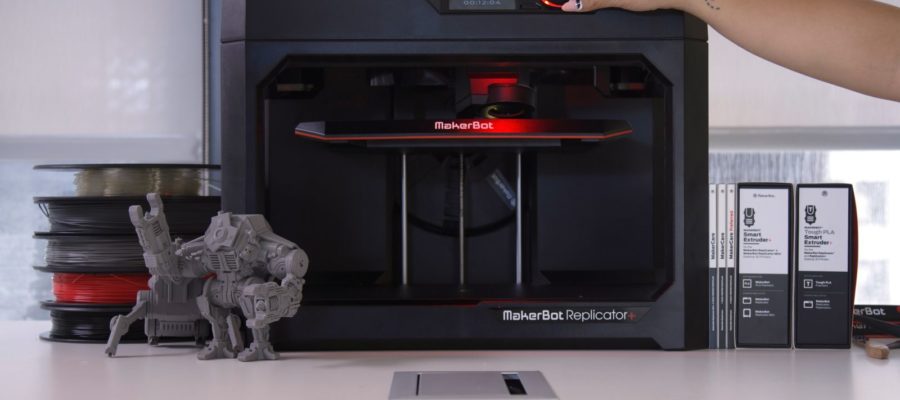MakerBot’s Hardware & Software Teams Collaborate Under One Roof
Product Development & Innovation
MakerBot is making great strides to unify their hardware and software teams under one roof to ensure the best possible product for their customers. After their 5th generation of hardware, the team took a step back to reevaluate their design and development process. They took customer feedback to heart and used that information as an integral part in refining their next generation of hardware and software.
With the development of the MakerBot Replicator+, the team took feedback from customer research and made these goals a priority: faster printing, greater reliability, higher print quality, reduced noise and improved ease of use. Although many different departments and teams at MakerBot collaborated to achieve these goals, one unification was especially pivotal- the mechanical engineers from MakerBot’s hardware team and the toolpather engineers from their software team.
To better understand this MakerBot team up, it’s important to know what the respective teams are responsible for. Toolpathing can be defined as setting specific instructions in regards to the travel path of the extruder on a MakerBot 3D printer. This includes calculating the speed and acceleration at which the extruder will travel in order to complete each slice in the most optimal way possible. The toolpath can determine a variety of factors for your end print such as internal strength, resolution and time to print. Toolpather engineers on the software team at MakerBot focus on optimizing these instructions, but the hardware on the printer itself provide the actual limits of the toolpather’s performance. With this in mind, the engineers on the software team work within those limits to conduct tests and adjust the program’s instructions for each printer’s physical system.
With the feedback from the toolpather team, the mechanical engineers from the hardware team at MakerBot could more carefully understand how to achieve the set goals such as increasing print speed and minimizing noise for the Replicator+. To increase the performance of the printing system, the engineering team made a number of design enhancements such as using sturdier materials, aluminum extrusions and more reliable manufacturing techniques. Together, these changes allowed for the realization of the 3D printer MakerBot wanted to create next such as higher performance, faster printing, higher quality and quieter operation on the new Replicator+.
A unified approach helps create the best product with the MakerBot Replicator+. The hardware and software teams aren’t the only ones that benefit from working closely together. All of MakerBot’s experts work in close collaboration with each other, allowing for an easier exchange of ideas, faster testing and ultimately producing a better product that customers will find enjoyable and easy to use.
Click here for a detailed look at all of our MakerBot Desktop 3D Printers.
Click here if you are interested in exploring other solutions for your organization please speak with one of our additive manufacturing expert.
